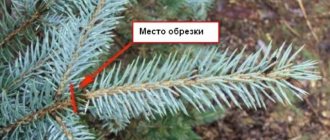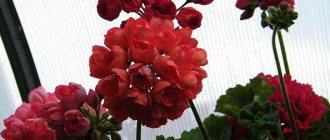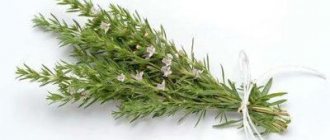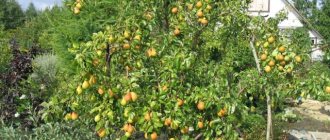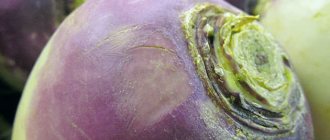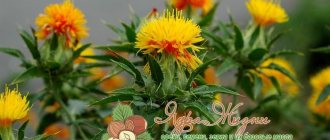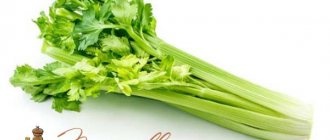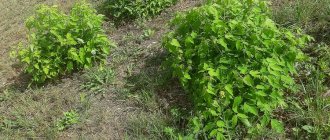Meadow geranium photo plant medicinal properties contraindications description
Latin name Geranium pratense
Geranium family
Geranium - (Pelargonium roseum Willd) Grows as a perennial plant in countries with subtropical and tropical climates, in Armenia, Georgia, Tajikistan - as an annual plant. To obtain essential oil, the entire above-ground part is distilled with steam during the flowering period. Oil yield: from 1 ton of raw materials, 1 - 3 kg are obtained. The main components: geraniol, borneol, citronellol, pinalool, terpineol, geranyl acetate, as well as in small quantities ketones, phenols. Historical background. In ancient times, geranium was used for fractures and to treat cancer. In 1819, the French chemist Recluse first obtained essential oil from geranium leaves. Since that time, it began to be used to treat inflammation of the middle ear, sinuses, and tonsils.
Meadow geranium
Meadow geranium Description
Meadow geranium . A perennial plant of the geranium family, up to 80 cm high. The stem grows from the rhizome. The leaves are palmately divided. The stem and leaves are covered with hairs and glands. Blooms from June to September. The flowers are geranium type, ending in two long pedicels. The fruit is a beak-shaped structure, which, after ripening, is divided into single-seeded fruitlets.
Spreading
Meadow geranium is common in the European part of Russia, Siberia and Central Asia. It grows in meadows, forest edges, fields, in mountain river valleys, deciduous and coniferous forests, in wet forest clearings, among ruins, near fences.
What is a crane bird?
Field geranium is a perennial herbaceous plant belonging to the Geranium family. Other names: meadow geranium, cranebird.
Field geranium has a thick rhizome and a low, erect stem that branches at the top. It can reach a height of 80 cm. The stem and leaves of field geranium are covered with small hairs with glands.
The leaves are located on long petioles. The cranebird blooms in June – September. The flowers are large, solitary, lilac-red. They sit on long stalks and have five petals. The fruits appear from August to September. The fruit is a beak-shaped structure, which, when fully ripe, is divided into smaller single-seeded fruits.
Application
Used in veterinary medicine for anthrax in horses. When mixed with alum, geranium dyes fabrics green.
Use in landscape design
Varieties are used in decorative plantings
Collection and processing of medicinal raw materials
The medicinal raw material is the above-ground part of the plant , sometimes the roots. The grass is dried under a canopy or in a dryer at a temperature of 40...45°C. Store in wooden or glass containers for 1 year.
Application in official and folk medicine
Various parts of the plant have astringent, disinfectant, anti-inflammatory, antibacterial, antitoxic, wound-healing, hemostatic and soothing effects. In folk medicine, this plant is used to treat malignant diseases and bone fractures. Depending on the dose, geranium preparations can stimulate or depress the function of the central nervous system; they have a positive effect in the treatment of snake bites.
Medicinal properties of meadow geranium and contraindications for use
The plant is valuable because it contains a large amount of useful substances. The basis is tannins.
Also contains:
- saponins;
- alkaloids;
- flavonoids;
- essential oils;
- anthocyanins;
- vitamins K and C;
- minerals – zinc, iron, manganese, nickel.
The root system is rich:
- tannin;
- phenolic compounds;
- starch;
- catechins;
- phenolcarboxylic acid.
In folk medicine, the above-ground part of the plant and sometimes the roots are used. Raw materials are harvested during flowering, rhizomes are dug up in the fall.
Geranium produces the following effects:
- astringent;
- hemostatic;
- anti-inflammatory;
- antipyretic;
- painkiller;
- disinfectant;
- antimicrobial;
- antitoxic;
- wound healing;
- antipruritic;
- relaxing.
Due to its wide range of effects, the plant is used in the treatment of many diseases. But before use, you need to familiarize yourself with the list of contraindications.
The herb should not be used in the following cases:
- childhood;
- gastritis, ulcer;
- thrombosis, thrombophlebitis, thromboembolism;
- intestinal obstruction, chronic constipation.
When taking medicine based on geranium orally, you must strictly follow the dosage.
Use during pregnancy and lactation should be agreed with your doctor. Self-medication can be harmful.
Recipes for various diseases
Meadow geranium medicinal properties
Roots and herbs are prescribed for epilepsy, upper respiratory tract disease, fever, inflammatory diseases of the gastrointestinal tract (gastritis, enteritis), heavy and long-lasting menstruation and hemorrhoidal bleeding. An infusion of the herb is used for baths and lotions for long-term non-healing purulent wounds, ulcers, abscesses, rheumatic joint pain, anal and genital fistulas. The grass powder is sprinkled on the wounds. The infusion is prescribed for sore throat and other inflammatory diseases of the oral cavity and pharynx in the form of rinses. It is indicated for leucorrhoea (douching), urolithiasis, gout and heart disease. In case of excessive hair loss, wash your hair with warm infusion without wiping it dry. The procedure is carried out every 1-2 days for 3-4 weeks. Geranium roots are used for dysentery, indigestion and poisoning from poor quality food. The powder is chewed for dental caries. To prepare the infusion, pour 2 tablespoons of chopped herbs into 2 glasses of cold water and leave for 8 hours. Drink in equal portions throughout the day. Prescribed for anal and genital fistulas. The decoction is prepared at the rate of 1 tablespoon of raw materials per 1 glass of hot water. Boil over low heat for 3-5 minutes, cool, filter and bring the volume to the original volume. Take 1-2 tablespoons 3 times a day with meals. The same decoction is diluted 4-5 times with water and used for rinsing. For douching, the volume of liquid must be at least 1-1.5 liters.
Varieties bred from meadow geranium
Geranium Rozanne
Based on meadow geranium, many ornamental varieties have been bred that can be grown in the garden, on a summer cottage, and in flower beds.
Purple Birdies
Bright purple, slightly curved petals give the flowers volume. Each flower grows from 5 to 15 petals. Geraniums of the Violet Birds variety grow large inflorescences of 3–5 buds each. Dark green leaves densely cover the tall stem. The size of the bush reaches 90–110 cm.
Purple birds bloom twice per season: in summer and autumn. At the end of June, the buds bloom, the plant blooms magnificently and profusely. Purple Birdies look great until late fall and winter.
Purple Birdies
Splish splash
The delicate white petals of the Splish Splash geranium are covered with blue streaks and large spots up to 4 cm in diameter. The plant, up to 70 cm high, has large flowers and wide openwork leaves with 5 lobes. In summer the leaves are green, but in autumn they take on an unusual color. Splish-splash blooms from June to August. An incredibly beautiful flower will decorate any garden all summer.
Perple gost
White petals with dark veins are a feature of the Purple Ghost species. The leaves and stem of this plant have a muted purple or brown tint. The height of the plant varies from 40 cm to 55 cm. The Purple Ghost variety has a very apt name: purple leaves combined with pale petals. The flower looks mysterious, enigmatic.
Laura
Delicate, double, white flowers of Laura geranium are covered with thin, almost imperceptible veins. Soft green openwork leaves grow on a stem up to 60 cm high. At first glance, this beautiful flower seems defenseless, but in fact it is strong, hardy, and unpretentious. It blooms from June to August, but retains its beauty until winter. These qualities allow this plant to be used in landscape design in a variety of ways.
Hocus Pocus
Bright blue and blue flowers are the special pride of geraniums of the Hocus Pocus species (in Latin, Hocus Pocus). This variety blooms in July and blooms until early autumn. Hocus Pocus has bright purple or dark purple leaves. The carved leaf grows up to 10 cm in length. They are covered with sharp teeth. The height of the plant reaches 60 cm. This bright, elegant flower will become a luxurious decoration for a flower bed or garden.
Hocus pocus
Meadow geranium (Geranium pratense L.)see also FAMILY LEGUMINES (FABACEAE, LEGUMINOSAE)
Meadow geranium
Perennial with a short rhizome and one or several above-ground shoots with strong, branching in the upper part, well-leafed stems 20-80 cm high. The basal leaves are long-petiolate, with kidney-shaped, rounded blades long 6-12 cm, almost to the base, seven-parted into rhombic-ovate pinnately incised lobes; stem leaves with shorter petioles, smaller in size, five-parted; the uppermost ones are sessile, tripartite. The flowers are numerous, in an umbrella-shaped inflorescence, located 2 on each peduncle, large, regular, wide open, drooping before and after flowering, and during flowering the open part is directed upward. The perianth is double, five-membered, free-leaved; petals are lilac-blue, about 2 cm long; stamens 10; pistil 1 with a five-locular superior ovary and 5 stigmas. The fruits are box-shaped, splitting into 5 single-seeded parts when ripe. The stems, leaf petioles, leaf blades, pedicels, sepals, and fruits are covered with erect and appressed hairs; glandular hairs predominate among them (see Fig.).
It has a wide range covering many regions of Eurasia. In the USSR, it is widespread throughout the European part, in Siberia, in a number of regions of Kazakhstan and Central Asia, and in some places in the North Caucasus. In Altai and Tarbagatai there is a form with smaller (petals up to 1.5 cm long) white flowers, classified as a special species - similar geranium (G. affine Ledeb.). The East Siberian form with more dissected leaves was described as Transbaikal geranium (G. transbaicalicum Serg.). Forms from the genus G. pratense with purple-violet corollas, common in the Caucasus Mountains, are also identified as special species: Ruprecht's geranium (G. ruprechtii Woron.) with large flowers and border (G. finitum Woron).
All of the listed species are meadow plants, growing in meadows of various types - from wet floodplain to steppe and dry, in a wide range of altitudes - from lowlands to highlands. They also inhabit other ecotopes: edges, clearings, thickets of bushes, light forests. They reproduce by seeds. They bloom mostly in the first half of summer. Cross-pollination by insects, including honey bees.
All geraniums are valued by beekeepers as sources of nectar and pollen, but their honey productivity is low and cannot be compared with the best domestic honey plants. The feeding qualities of geraniums are below average, although the protein content in meadow geranium grass exceeds 11%, and ascorbic acid 220 mg%, it is poorly eaten by livestock, possibly due to the presence of tannins in all its parts: in the grass there are up to 4% of them, and in rhizomes with roots up to 38%. The underground parts, suitable for tanning and dyeing leather, were also used in folk medicine as fixatives and anti-inflammatory agents. All geraniums are quite decorative, but they fade extremely quickly when cut into bouquets. This feature of plants should be explained, especially to lovers of bouquets of wild plants.
^GL: MEADOW GERANIUM (GERANIUM PRATENSE L.)
Growing problems, diseases and pests
Geraniums are often attacked by pests. Most often these are aphids, scale insects, whiteflies or mites. To combat insects, you should immediately use insecticides. One treatment will not be enough, so after a week you will have to repeat the procedure.
If the plant is not watered enough, its foliage begins to turn yellow. With a lack of light, the stem becomes very exposed. Fungal pathologies often plague geraniums. These diseases are powdery mildew and brown spot. Biofungicides help get rid of diseases, but only in the early stages of their development. If the damage has become extensive, it is better to dig up the bush and destroy it.
Forest and meadow geraniums not only have healing properties, but are also highly decorative. Having planted this plant, the gardener will no longer be able to deny himself the pleasure of trying new varieties.
Chemical composition
The plant contains the following biologically active substances:
- essential oil
- starch
- phytoncides
- coumarins
- flavonoids
- saponins
- pectins
- carbohydrates
- resin
- minerals
- tannins
- organic acids
- gum
- tannins
- glycosides
In addition, a fragrant substance was found in geranium, which was called geraniol. This substance has an antimicrobial effect on the body and is widely used in perfumery and cosmetology.
Is it possible to transplant meadow geranium to the site?
Ampelous pelargonium or geranium - growing and care at home
To transplant meadow geranium to a plot, it is important to choose the right place for its growth. Light fertile soil will allow you to get long and beautiful flowering. The flower itself does not like transplants; it can easily grow in one place for at least 10 years. If the landscape becomes boring, it can be diluted with a pelargonium flower. The choice of variety will be an important criterion for good plant growth:
- Large-flowered geranium will take root well in sunny, dry areas.
- Himalayan, Meadow and Magnificent geraniums will thrive in moist, warm areas.
- The Balkan variety prefers dry soil and almost complete shade.
- Swamp and Himalayan geraniums do not mind growing in moist, shady places.
Important! To collect seeds, you need to prepare a pod in advance, wrapped in a paper bag. When the pod shell bursts, all the seeds will remain in the bag and can be planted on the site.
Features of cultivation and care
Geranium does not require special care. The main thing to do is water the plant and weed it. Geraniums are weeded in May, when there is not much foliage on the flower. This will be beneficial for the root system, as it will receive more oxygen. If the gardener does not have enough time for loosening, low-growing bushes can be planted between the geraniums and mulched.
The water treatment regime for the crane bird is extremely important. The plant categorically does not tolerate drought, but abundant watering often leads to problems in the form of rotten roots.
Note! The plant tolerates winter well, even in open ground there is no need to cover it.
What is the difference between a wild cranebird and a forest cranebird?
- Habitat: forest and meadow.
- Appearance: forest geraniums often have purple and violet flowers, while meadow geraniums have blue and bluish-violet flowers.
- The peduncles of forest geranium are protruding, while those of meadow geranium are deflected downwards.
- Forest geranium prefers moister soil and less illuminated growing areas than meadow geranium.
- Meadow geranium is superior to forest geranium in productivity as a honey plant.
Wild geraniums are excellent honey plants . In nature, we often encounter both forest and meadow geraniums. They are similar at first glance and it will be quite difficult for an inexperienced person to distinguish them.
In Russia you can find up to 40 species of geranium. Geraniums in gardens and household plots are quite easy to maintain if you maintain the properties of the soil and the level of illumination, as in the wild.
Thanks to the variety of colors, the owner of geranium can create a flower arrangement to suit his taste.
The most popular varieties of geranium are:
- Honey plant;
- Summer Skies;
- Black Beauty.
The double flowers of the garden variety Summer Skies have a pinkish-lavender color. This variety is distinguished by its growth; in landscape design, when setting up a flower bed, it is advisable to plant it in the background; after flowering, it is worth trimming the plant completely.
If you want to improve the area and plant a plant with dark foliage, then you can safely purchase Black Beauty geranium; it will be suitable for the foreground of a flower arrangement in the garden plot.
Commercial honey harvest can be provided by meadow geranium , honey from geranium is dark red, with a weak aroma and a peculiar taste.
Where does meadow geranium grow?
The grass can be found in clearings and forest edges (coniferous and deciduous) with moderate humidity. The crane bird is distributed in the following areas:
- Siberia;
- Europe;
- Middle Asia.
Important! The name is translated from Greek as “crane”. The plant resembles a bird's beak.
When does meadow geranium bloom?
The crane tree is a honey plant. Flowering of meadow geranium is observed for two months in May and June. This is a medicinal plant that is used to treat and prevent various diseases.
